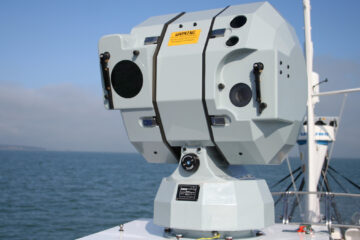AIR 3023
The first program is named AIR 3023 Phase I “Enhanced Maritime Strike for the Air Combat Capability”. It calls for the procurement of anti-ship missiles for the Super Hornets of the Royal Australian Air Force (RAAF). The RAAF has a fleet of a 24 F/A-18F Super Hornets and 11 EA-18G Growler. The future missile would likely be fitted on the Super Hornet exclusively however.

Lockheed Martin’s LRASM would be a “natural fit” for the RAAF Super Hornets, since the missile was selected for the U.S. Navy’ Super Hornet as part of the OASUW Increment I requirement and just achieved early operational capability as reported by Naval News. (Edit 10/15/2019: LRASM actually missed EOC in September, as reported by Inside Defense)
SEA 4100

The second program, dubbed SEA 4100 Phase 1 (previously known as
SEA 4000 Phase 4), is for the procurement of a new generation maritime strike capability for all major surface combatants of the Royal Australian Navy (RAN). As is the case in other countries such as the United Kingdon for examples, the new missile would be replacing the ageing Harpoon anti-ship missile.
Classes of ships to be fitted with the next generation missile would be the existing ANZAC-class frigates and the Hobart-class AWD as well as the future Hunter-class frigate (based on the Type 26 frigate).
During our chat with Lockheed Martin at the show, company representatives reminded us that LRASM was successfully test-launched from surface platforms both via top side launchers and MK41 VLS. The company was showcasing a scale model of a LRASM inside a MK41 VLS at PACIFIC 2019, along with video footage of said tests.

Regarding the type of launchers to fill the RAN needs, Lockheed Martin told us it is for the customer to decide which solution would best fit their needs. They are not advocating or favoring one solution above the other.
Three way battle
Naval News understands that it is a three way battle in both programs since the LRASM is facing competition from Kongsberg’s JSM/NSM and Saab’s RBS 15 Mk IV (all three missiles were being showcased by the three defence companies at PACIFIC this year).
BAE Systems Australia’s RF Sensor
BAE Systems Australia won an Australian Government contract in 2017 to develop a passive radio frequency (RF) sensor for the JSM, complementing the weapon’s existing infra red (IR) seeker.
Asked whether this gives a competitive advantage to the JSM, Lockheed Martin representatives told Naval News that they stand ready to integrate this new sensor, “a sovereign Australian technology”, aboard the LRASM, should the customer decide it.
For the record, BAE Systems Inc (the U.S. arm of BAE Systems) is the designer and producer of the LRASM sensor. BAE Systems’ long-range sensor and targeting technology enables LRASM to detect and engage protected ships in all weather conditions, day or night, without relying on external intelligence and navigation data.
About AGM-158C LRASM

The AGM-A58C Long Range Anti-Ship Missile (LRASM) is designed to detect and destroy specific targets within groups of ships by employing advanced technologies that reduce dependence on intelligence, surveillance and reconnaissance platforms, network links and GPS navigation in electronic warfare environments. LRASM will play a significant role in ensuring military access to operate in open ocean/blue waters, owing to its enhanced ability to discriminate and conduct tactical engagements from extended ranges.
Armed with a 1,000 Lbs (454 kg) penetrating blast fragmentation warhead, LRASM is low observable and likely has a range comparable with JASSM ER (around 500 nautical miles).
LRASM is designed to meet the needs of U.S. Navy and U.S. Air Force Warfighters in contested environments. The air-launched variant provides an early operational capability for the U.S. Navy’s offensive anti-surface warfare Increment I requirement.






